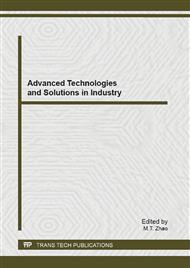p.311
p.315
p.320
p.325
p.329
p.337
p.342
p.348
p.352
A Material Model for Steel Plates during the Cooling Process
Abstract:
The time-dependent inhomogeneous temperature distribution in steel plates during the cooling increases thermal strains which, in turn, generate plastification and thus residual stresses. Moreover, phase transformation from the parent austenite phases into a product phase typically entails not only metallurgical strains but also accounts for transformation induced plasticity (TRIP), which again generates transformation related residual stresses. A unified material model that consisting of all relevant contributions to the total strain rate, i.e., elastic, plastic, thermal, metallurgical and TRIP strain contributions could be built in this paper. Transformation also released a significant amount of latent heat which naturally affected the temperature field that governed the evolution of the product phase. For the latter kinetic relationship about difference between diffusive and displacive transformation mechanisms depending on the local cooling rate is presented. Using an Avrami-like approach, the transformation kinetics is set up especially for complex cooling histories. The material model simulated the evolution of the residual stresses as well as the warping of the steel plates after completely cooling to room temperature.
Info:
Periodical:
Pages:
329-333
Citation:
Online since:
June 2013
Authors:
Keywords:
Price:
Сopyright:
© 2013 Trans Tech Publications Ltd. All Rights Reserved
Share:
Citation:


